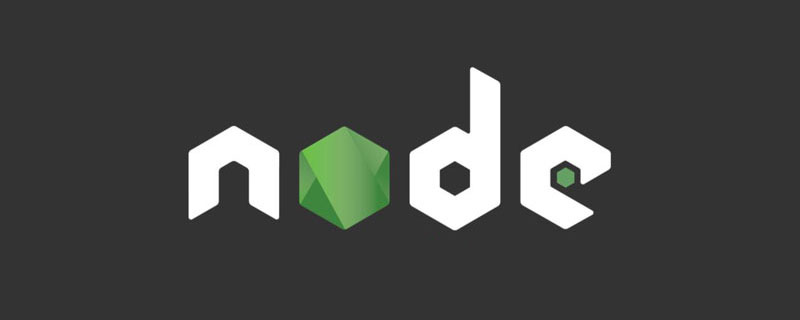In the Node.js application architecture, the middle layer acts as a router, validator, data processor and error handler. It is located between the front end and the back end. It centrally controls requests and responses. Through parallel processing, Features such as caching, security measures, and service discovery improve application scalability, performance, security, and simplify the development process.

The role and function of the middle layer in Node.js
In the Node.js application architecture, the middle layer plays a vital role . It sits between front-end and back-end services and is responsible for handling requests, applying business logic, and sending responses to clients.
The role of the middle layer
The middle layer mainly assumes the following functions:
- Routing requests:Intercepts and processes incoming HTTP requests, Forward the request to the appropriate controller or handler.
- Authentication and authorization: Check whether the request is legal and ensure that only authorized users can access specific resources or perform certain operations.
- Data processing: Perform operations such as data transformation, validation, and aggregation to prepare the data before passing it to the backend service.
- Error handling: Catch errors and return the appropriate HTTP status code and error message to the client.
- Logging and Monitoring: Log important events for troubleshooting, performance monitoring, and auditing.
- Service discovery: Dynamicly find and connect to backend services based on request or configuration.
- Load Balancing: Distribute requests to multiple backend instances to improve scalability and availability.
- Caching: Cache frequently accessed data in memory to reduce load on backend servers and improve response times.
- Security: Implement security measures such as Cross-Site Request Forgery (CSRF) protection and rate limiting to protect applications from attacks.
Benefits of the middle layer
Using the middle layer can bring the following benefits:
- ##Decoupling the front end and back end: Improve application maintainability by separating business logic from the presentation layer.
- Improve scalability and performance: Improve application scalability and response time by parallel processing of requests and caching mechanism.
- Improve security: Enhance application security and reduce risk with centralized security measures.
- Simplify development: Simplify the development process and improve developer productivity by providing common tools and functions.
The above is the detailed content of What are the functions of the nodejs middle layer?. For more information, please follow other related articles on the PHP Chinese website!
 Vercel是什么?怎么部署Node服务?May 07, 2022 pm 09:34 PM
Vercel是什么?怎么部署Node服务?May 07, 2022 pm 09:34 PMVercel是什么?本篇文章带大家了解一下Vercel,并介绍一下在Vercel中部署 Node 服务的方法,希望对大家有所帮助!
 node.js gm是什么Jul 12, 2022 pm 06:28 PM
node.js gm是什么Jul 12, 2022 pm 06:28 PMgm是基于node.js的图片处理插件,它封装了图片处理工具GraphicsMagick(GM)和ImageMagick(IM),可使用spawn的方式调用。gm插件不是node默认安装的,需执行“npm install gm -S”进行安装才可使用。
 火了!新的JavaScript运行时:Bun,性能完爆NodeJul 15, 2022 pm 02:03 PM
火了!新的JavaScript运行时:Bun,性能完爆NodeJul 15, 2022 pm 02:03 PM今天跟大家介绍一个最新开源的 javaScript 运行时:Bun.js。比 Node.js 快三倍,新 JavaScript 运行时 Bun 火了!
 聊聊Node.js中的多进程和多线程Jul 25, 2022 pm 07:45 PM
聊聊Node.js中的多进程和多线程Jul 25, 2022 pm 07:45 PM大家都知道 Node.js 是单线程的,却不知它也提供了多进(线)程模块来加速处理一些特殊任务,本文便带领大家了解下 Node.js 的多进(线)程,希望对大家有所帮助!
 nodejs中lts是什么意思Jun 29, 2022 pm 03:30 PM
nodejs中lts是什么意思Jun 29, 2022 pm 03:30 PM在nodejs中,lts是长期支持的意思,是“Long Time Support”的缩写;Node有奇数版本和偶数版本两条发布流程线,当一个奇数版本发布后,最近的一个偶数版本会立即进入LTS维护计划,一直持续18个月,在之后会有12个月的延长维护期,lts期间可以支持“bug fix”变更。
 node爬取数据实例:聊聊怎么抓取小说章节May 02, 2022 am 10:00 AM
node爬取数据实例:聊聊怎么抓取小说章节May 02, 2022 am 10:00 AMnode怎么爬取数据?下面本篇文章给大家分享一个node爬虫实例,聊聊利用node抓取小说章节的方法,希望对大家有所帮助!


Hot AI Tools

Undresser.AI Undress
AI-powered app for creating realistic nude photos

AI Clothes Remover
Online AI tool for removing clothes from photos.

Undress AI Tool
Undress images for free

Clothoff.io
AI clothes remover

AI Hentai Generator
Generate AI Hentai for free.

Hot Article

Hot Tools

PhpStorm Mac version
The latest (2018.2.1) professional PHP integrated development tool

Atom editor mac version download
The most popular open source editor

SublimeText3 Linux new version
SublimeText3 Linux latest version

ZendStudio 13.5.1 Mac
Powerful PHP integrated development environment

mPDF
mPDF is a PHP library that can generate PDF files from UTF-8 encoded HTML. The original author, Ian Back, wrote mPDF to output PDF files "on the fly" from his website and handle different languages. It is slower than original scripts like HTML2FPDF and produces larger files when using Unicode fonts, but supports CSS styles etc. and has a lot of enhancements. Supports almost all languages, including RTL (Arabic and Hebrew) and CJK (Chinese, Japanese and Korean). Supports nested block-level elements (such as P, DIV),









